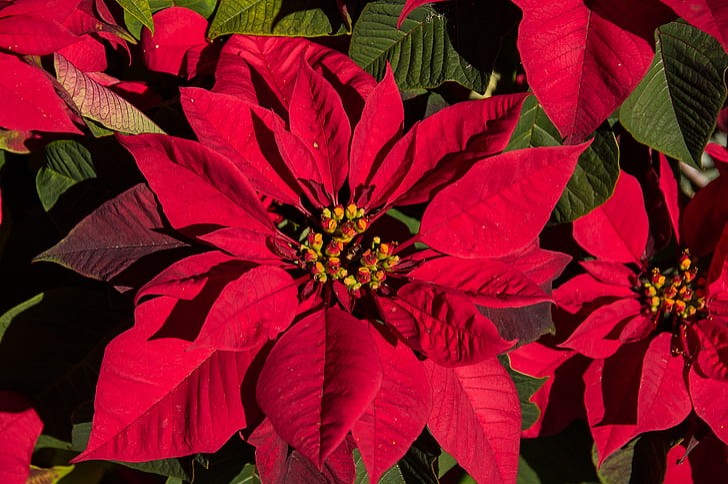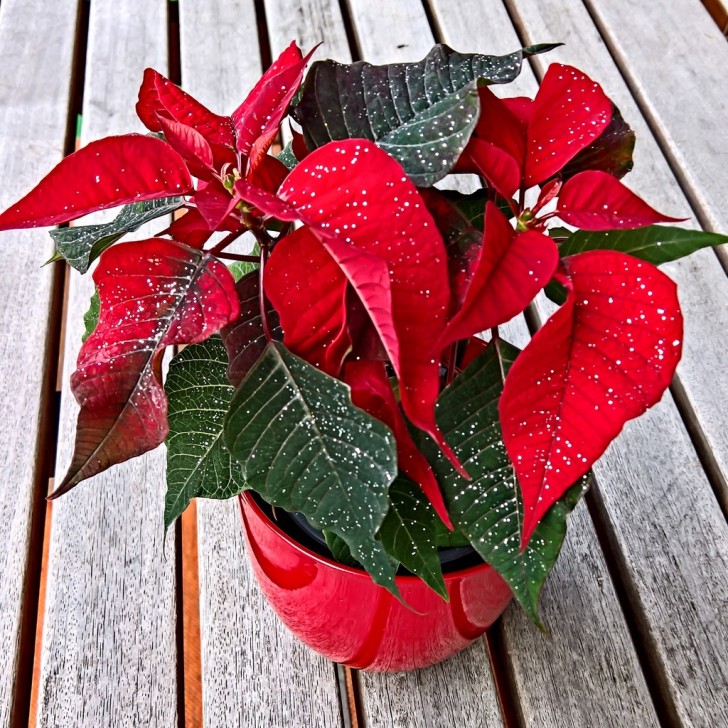Is your Poinsettia completely green? Here's the secret to making it bloom and turn red again in time for Christmas

The Poinsettia, commonly known as the Christmas Star, is one of the symbols of the festive holidays with its bright green leaves and magnificent red blossoms during the winter season. These days available on the market in numerous hybrids, including white, yellow, pink, or variegated variations, Poinsettias are very popular around Christmastime.
Native to Mexico and accustomed to specific climatic conditions, Poinsettias typically don't survive beyond the holidays, starting to lose their leaves as early as February. Although this is normal for this species, many mistake the leaf loss as the plant dying and throw it away.
If you have the patience and persistence, however, you can make your Poinsettia survive from one year to the next - although you'll notice that its leaves will turn green. So, how do we turn them red again? We'll reveal the secret below:
A photochromatic plant

Many don't know that the Poinsettia is a photochromatic plant and, unlike other species, requires a period of darkness to produce its flowers and initiate the coloration of its leaves. This plant is short-day type and, therefore, needs long hours of darkness for the phytochrome (the plant pigment responsible for its coloration), to be produced.
The process you'll need to follow is simple, although somewhat demanding. You'll need to recreate the ideal climatic conditions for flowering, specifically:
- Ensure the temperature never drops below 16-18 degrees Celsius. Keeping the plant indoors is a good idea, making sure to avoid using the coldest spots in the home.
- Make sure your Poinsettia is always kept away from any heat source.
- Keep the plant in complete darkness for 12-16 hours - approximately from 5 PM to 7 AM the following morning. Do this by simply covering it with a lightproof cloth or moving it into a room/closet you never use.
- During the day (from 7 AM to 5 PM), you can expose it to indirect sunlight, perhaps placing it next to a bright window.
This process should be repeated daily for about 6-8 weeks starting from September.
Other useful tips

By following the above-described procedures, in just 4 weeks, your Poinsettia will begin to turn red. However, the correct conditions of light and darkness are not the only ones that need to be respected:
- Humidity: The air inside our homes tends to become very dry during winter due to heating. This condition could cause the leaves of your Poinsettia to fall off more quickly. Ensure the right humidity level by using a humidifier or regularly misting the leaves (or placing a tray of water next to or under the pots).
- Temperature: As mentioned above, this plant is native to Mexico and, therefore, requires a consistent temperature and without exposure to cold or hot drafts. Ensure that the temperature range in the environment where the Poinsettia is located stays between 16 and 22 degrees Celsius.
- Watering: The last crucial point is regular watering, keeping the soil always slightly moist but never wet. Check the soil daily and water when it begins to dry out.
Good luck with your Poinsettias!





